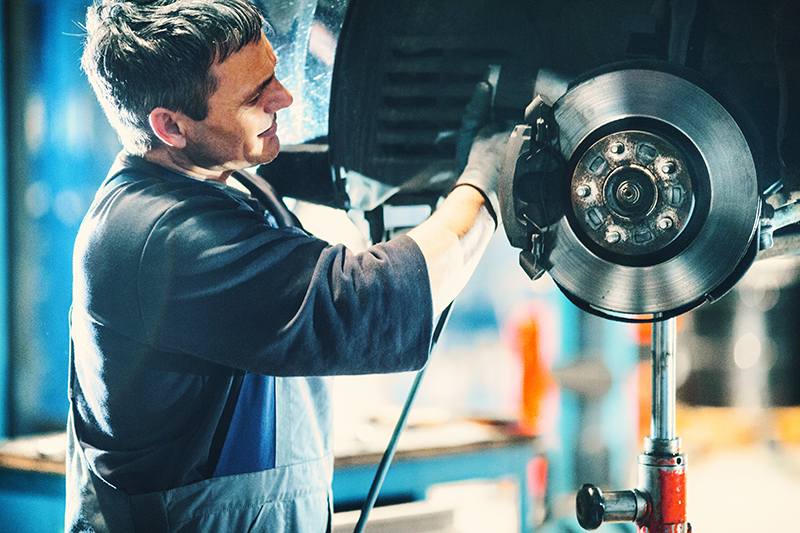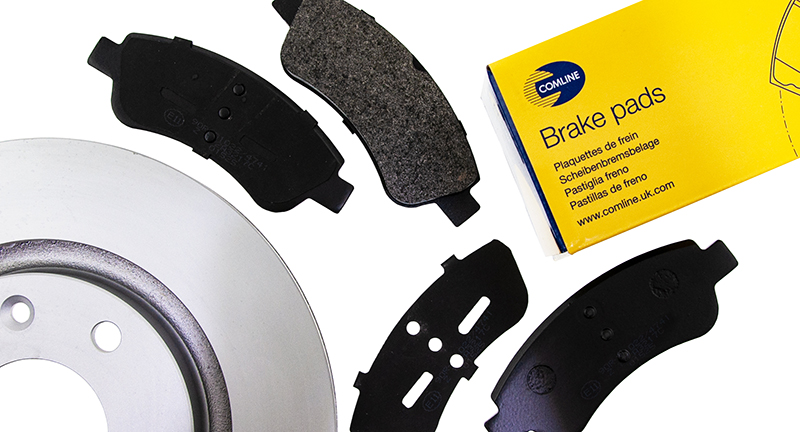
Comline’s brake doctor – aka Dr Keith Ellis – answers some of the most frequently asked questions surrounding brakes.
What are the main causes of brake noise?
Brake noise has been a common problem for drivers since motorised vehicles started to replace the horse and cart, and the automotive industry as a whole invests many millions each year in developing solutions to this problem. Arguably, the most common form of noise is brake squeal; in simple terms, squeal is caused by vibrations that result from the interaction between a brake disc, brake caliper, and brake pad. Squeal is directly influenced by various internal and external factors, including the temperature of the disc or pad, the ambient temperature in which they are operating, the speed that the vehicle is travelling, and the pressure being exerted under braking.
Brake pad shape can also influence brake noise, particularly under light braking pressures. The wrong shape can result in excessive noise, which is why you will see such a variation in pad shape by make and model and the use of noise prevention technologies, such as backing shims, slots and chamfers.
From a development perspective, any noise that exceeds 70db-80db is seen as problematic, as it is distinguishable by the human ear from inside the vehicle.
How do I detect the cause of brake noise?
Ask the vehicle owner to explain the noise and when it occurs or, alternatively, conduct an initial test-drive to help establish a prognosis. Technical service bulletins may also advise if the noise has a known source and are a handy point of reference.
Inspect the brake system and associated components; brake noise can be magnified or even caused by faulty components outside of the braking system. Brake springs, anti-rattle clips and shims will deteriorate and can cause brake noise to increase. It’s recommended to replace these accessory items when installing new pads.
Worn or damaged mountings and bushings can cause caliper movement, resulting in uneven pad application and wear, all of which can contribute to noise. Look out for corrosion and/or sticking pistons.
Worn wheel bearings can allow too much play, which can again result in uneven pad application and wear causing brake noise. A worn bearing flange can also cause disc thickness variation which can contribute to excessive brake noise.

What process should I follow to prevent excessive brake noise?
Check the brake disc for wear and corrosion – replace disc or remove corrosion as required.
Clean the inside and outside of the caliper using brake cleaner to remove any dirt and corrosion.
Clean the caliper slide bolts and end pad where it sits on carrier, then lubricate with specialised braking grease. Extra care should be taken to avoid greasing the face of the pad.
Replace any damaged brake hardware, ensure brake pistons are fully retracted into the caliper and ensure the correct fitment of shims and accessories.
Educate the vehicle owner about the importance of ‘bedding-in’ new pads and discs for the first 200 miles/320 kilometres.
Comline’s braking range
Comline’s braking products are not just used in the UK but around the world. As two of the brand’s core product categories, Comline pads and discs are sold by distributors and installed by technicians in more than 50 countries.
What’s more, brake calipers are now also an integral part of the company’s range, crafted with the same level of design, manufacture, testing and reliability as the rest of the portfolio.
Focusing on pads, Comline offers a comprehensive range of ECE R90 approved brake pads – more than 800 references, in fact, for popular European, Japanese and Korean passenger and light commercial vehicles.
All of the firm’s brake pads are independently certified as part of ECE R90 regulations to be within +/- 15% of the original part, but Comline also elects to put its pads through a series of additional group of tests that go beyond the regulatory requirement. Comline proudly refers to these tests as R90+ and they include:
- Hot shear at 300°C
- Wear testing
- AK master testing (on dyno)
- Noise testing at varying speeds and pressures
Switching to discs, the manufacturer produces more than 1,350 applications that cover over 90% of European, Japanese and Korean passenger and LCV models. Approximately 800 feature an anti-corrosion coating, which is applied to all areas of the disc, including the hub and friction surface, to a maximum thickness of 25 microns, which offers effective rust protection.
Onto brake calipers, first launched in 2020, these all-new units are manufactured to original equipment specification and supplied with a two-year (40,000-mile/65,000km) warranty. The company aims to assure quality, once again thanks to extensive control procedures, including the testing of components in varying environments against stringent criteria. These include pressure performance monitoring and corrosion resistance analysis via accelerated salt spray testing.









